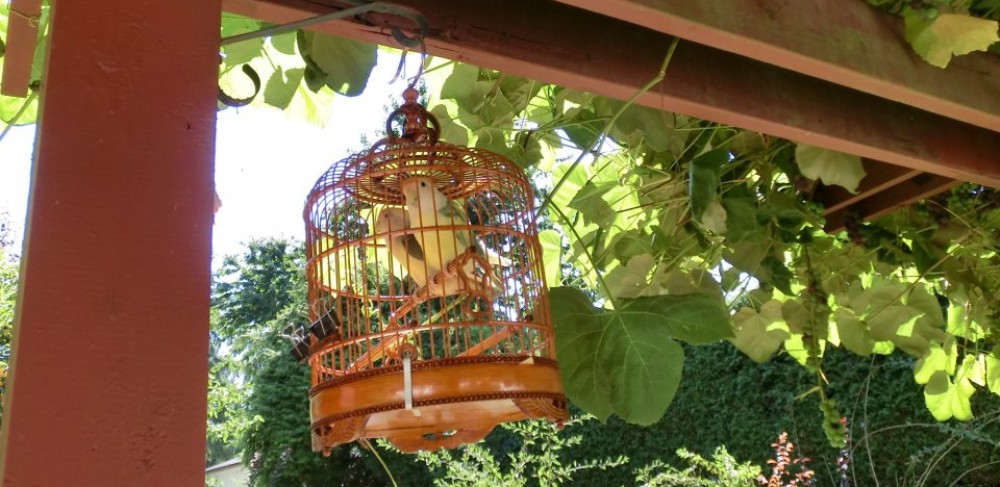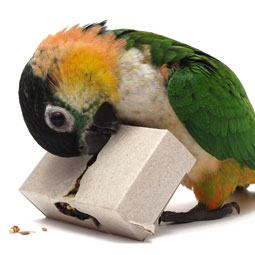To allow parrots in perform their natural behaviours, it is recommended to provide feeding, social and environmental enrichment for the birds.
By providing feeding enrichment such as opportunities for parrots to forage for their food, it would allow the birds to have control in their environment and perform their natural behaviour. Moreover, parrots prefer different food options compared to the same diet. One example of feeding enrichment is to make holes into a block of wood and placing an assortment of seeds or fruits in the holes for the parrots to find (Coulton et al., 1996; Kalmar et al., 2007). There are also bird toys that are blocks of wood that have holes where owners can place different types of foods in for parrots to forage. By placing nuts or fruits in areas where parrots cannot reach such as the top of the cages or on swings, it is also a form of feeding enrichment for the parrots (Kalmar et al., 2007).
Due to the fact that parrots are social animals that regularly live in flocks in the wild, it is important for the owner to provide attention to their companion bird if it is kept alone (Engebretson, 2006; Kalmar et al., 2007). Vocal interaction is also a method for social enrichment (Hoek & Cate, 1998).
By placing the perches spaced apart, it allows for parrots to have environmental enrichment so that they can fly and climb. Moreover, increasing the size of the cage will allow parrots to have more freedom to move (Hoek & Cate, 1998). Cotton ropes also allow parrots to chew and climb on the ropes (Kalmar et al., 2007). It is recommended to not provide plastic toys aside from acrylic parrot toys in cages because parrots can chew and break off the pieces which may result in them swallowing the pieces (Kalmar et al., 2007).

